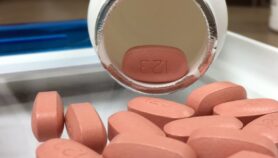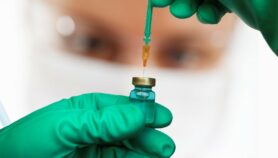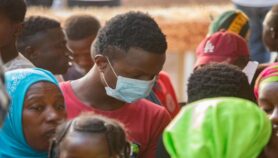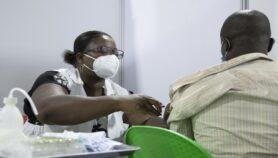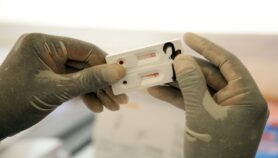19/07/21
AI app ‘improves accuracy of HIV testing’

By: Vera Ouma
Send to a friend
The details you provide on this page will not be used to send unsolicited email, and will not be sold to a 3rd party. See privacy policy.
[NAIROBI] Scientists have developed a technology that relies on artificial intelligence (AI) to interpret HIV test results, raising hopes of improving the quality of diagnostics, particularly in low- and middle-income countries, a study says.
With more than 100 million HIV tests performed globally each year, improved quality assurance could better the lives of millions of people by reducing the risk of inaccurate tests, the study adds.
The AI-based mobile app deployed in a pilot field study in KwaZulu-Natal, South Africa, accurately identified 97.8 per cent of positive and 100 per cent of negative HIV test results.
“The overall performance of 98.9 per cent accuracy is notably higher than traditional visual interpretation of study participants.”
Rachel McKendry, University College London
Trained community health workers accurately predicted 95.6 per cent of positive tests and 89 per cent of negative tests, showing the superior accuracy of the AI technology. The workers used the mobile app to record their interpretation of 40 HIV test results, as well as capture a picture of the tests to automatically be read by the machine learning classifier.
Artificial intelligence, or deep learning, refers to the imitation of human intelligence in machines that are programmed to think like humans and mimic their actions.
“The findings demonstrate the potential of deep learning for accurate classification, whether it’s positive or negative, of rapid diagnostic tests. The overall performance of 98.9 per cent accuracy is notably higher than traditional visual interpretation of study participants,” says Rachel McKendry, study co-author and a professor of biomedicine and nanotechnology at the London Centre for Nanotechnology, University College London in the United Kingdom.
McKendry tells SciDev.Net that the study began in 2017 with the aim of developing low-cost, user-friendly, mobile phone-connected diagnostic tools for HIV and to evaluate the feasibility of introducing these tools to improve access to HIV testing and subsequent care, in resource-limited settings.
There has been acceptability for other devices sending HIV rapid test results to an online database in real time, according to McKendry. Many small-scale approaches piloted on these have shown good performance but most require a physical attachment such as a portable reader.
As part of the study, 60 trained field workers at the South Africa-based Africa Health Research Institute helped build a library of more than 11,000 images of HIV tests that were taken in various conditions in the field in KwaZulu-Natal. From this library, the AI app was trained to classify tests as positive or negative, according to the study published in Nature Medicine last month.
“We believe our real-world image library of 11,000 images acquired in the field … is the first of its kind at this scale and our study demonstrates that deep learning models can be deployed with mobile devices in the field, without the need for other attachments,” McKendry adds.
The app could be adapted in other locations, explains Kobus Herbst, study co-author and director of the Department of Science and Technology-funded South African Population Research Infrastructure Network.
“Although the study focuses on interpretation of HIV tests, this tool could be adapted to interpret results of rapid diagnostic tests for other infectious diseases,” Herbst, who is a public health physician specialising in health and research information systems, tells SciDev.Net.
Herbst says the app is not yet available for general use but has been co-developed with end users in mind and to be low-cost and affordable for health institutions in low- and middle- income countries.
McKendry calls on African policymakers to promote the use of digital technologies for addressing health issues “Historically, public health policymakers have been slower to take up digital innovations than other sectors,” she explains.
Bernard Langat, director of HIV, tuberculosis, malaria and noncommunicable diseases programme at Amref Health Africa, says the app has great potential for minimising errors in reading HIV test results beyond healthcare facilities.
Ensuring accurate results, he adds, is an important intervention in HIV programming.“There is a need to expand the library of images to include those from different settings in Sub-Saharan Africa and work closely with HIV control programmes in these countries to further refine the innovations in these settings,” he says.
This piece was produced by SciDev.Net’s Sub-Saharan Africa English desk.










